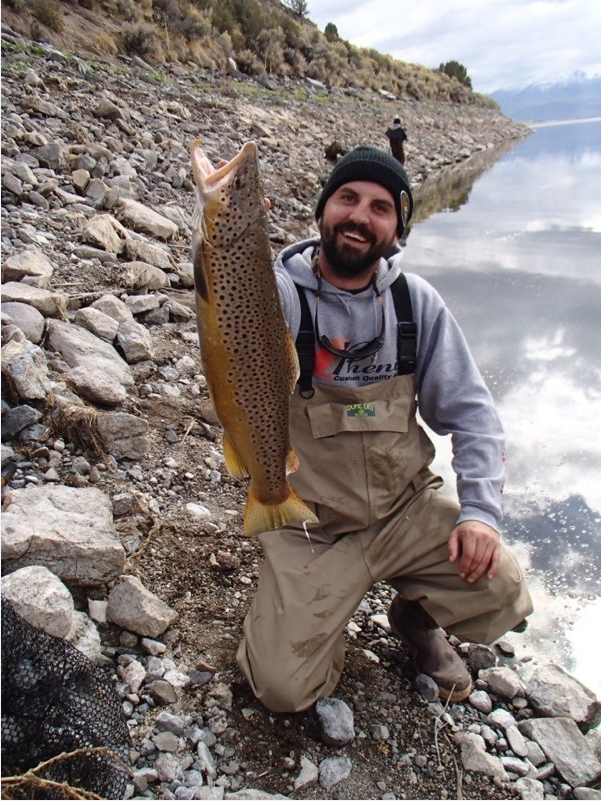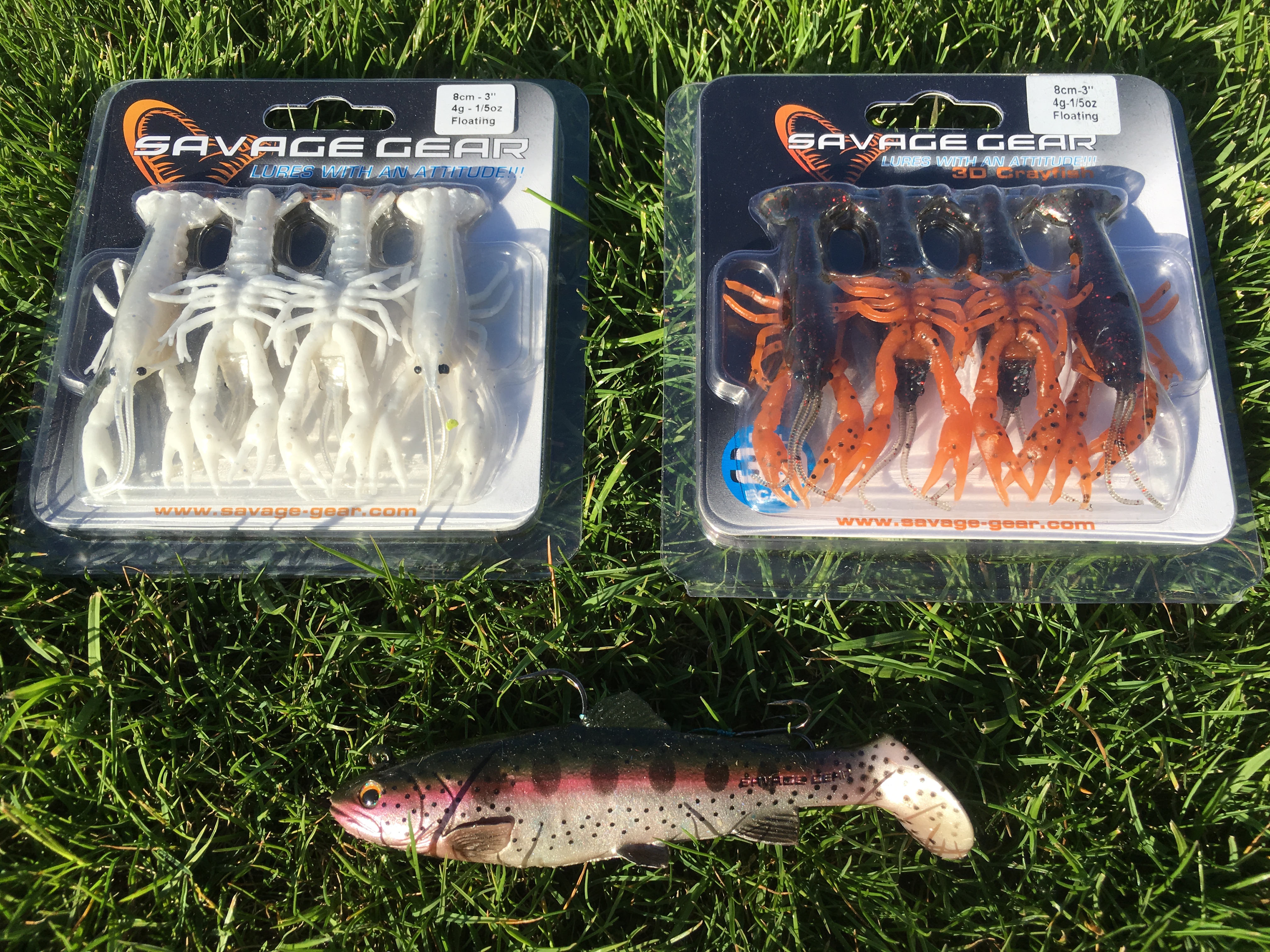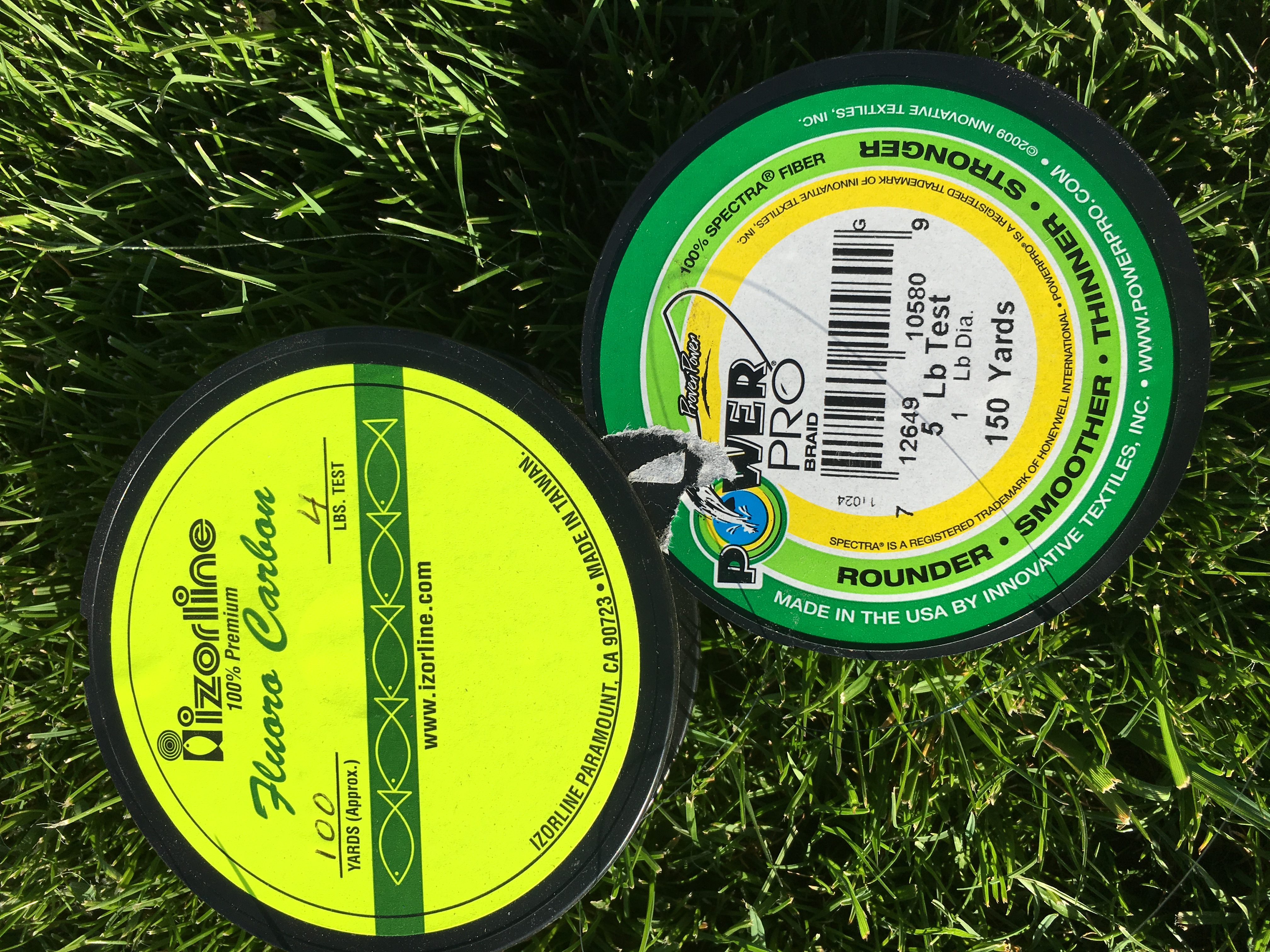Countdown to Trout Opener: Brown Bagging
We’re counting down the days until Saturday’s statewide trout opener. Today: brown trout tips and tactics.
By Chris Cocoles
With anglers flocking to the Eastern Sierra for the April 30 trout opener, many will be targeting rainbow trout in popular lakes like Crowley and Convict.
But Southern California trouthead Craig Adkinson is hoping to score some big early brown trout in some of his favorite rivers and streams as the spring season opens in several fisheries. Generally it’s late in the season – fall – when most of the so-called “brown baggers” show up to land trophy browns. But Adkinson can catch big fish throughout the early part of the season.
One technique Adkinson and his buddies have adopted is to afix a rattle bobber atop a long leader – 5 to 8 feet in length, depending on the depth of the water they’re fishing – with a small leadhead to get the bait down into the current.
“I’ve been getting them that like that throwing it into the buckets of the creeks, or any areas where there’s a ledge and a drop-off; or behind big boulders. I’ll throw nymphs and (artificial) minnows around, and that’s how I’ve been getting a lot of big browns,” Adkinson says, adding that the rattle bobber’s vibrations help entice strikes when jigging the lures in the water.
“Others may fish in the same area and overlook it; they think it looks fishy but can’t figure out why they’re not getting bit when their jigs are bouncing around the bottom. But I’ll throw the rattle bobber in the same spot. I think with the way the rattle bobber works and keeping the jig above bottom, my jig will be right in the strike zone.”
Adkinson isn’t a big fly fisherman but collects as much information about water conditions as he can from mostly secretive fly anglers who know the high country so well. Surely they are better informed than the big-city folks who flock from Los Angeles up Highway 395 once the waters are open for business again.
“A lot of what they’re interested in is what they call a break or an underwater current break; they look for an old creek channel inside of a river,” Adkinson says. “So if you’re looking at the seams of an old river, you can see where old rivers used to be and where it will cut under the bank. You can find an area where there used to be a tree or bush close to the river.”
After a winter of heavy snowfall but not much melt, water flows will remain a little slower than they should be after the runoff. With rivers and creeks not quite washed out, most fish have been holding in what’s known as a “fast-water slick” that flows into deeper pools where water either becomes slower or faster. Trout will also sometimes hide behind submerged boulders or fallen trees.
OUTFOXING A BROWN
“The browns are actually a lot smarter than the rainbows,” Adkinson says. “They don’t want to eat (typical rainbow staples like) PowerBait or salmon eggs. You have to use baits that resemble what they’re used to eating.”
Lures resembling minnows or nymph-like jigs are good choices. Browns will gorge on smaller fish like Sacramento perch and small stocked rainbows. But don’t overlook crawdads (crayfish), a key part of their diet, so lures resembling the crustaceans can be a perfect offering too.
“These techniques will work all year-round; they only vary around – depending on the water clarity – which colors you choose,” Adkinson says. “You just want realistic colors of the things that they’re used to eating. So like the fly fishermen say, match the hatch.”
Very light line – about 4-pound fluorocarbon – is also recommended.
“These fish are very vigilant – very smart and well-adapted. The bigger browns were probably caught before when they were smaller,” Adkinson says. “Or some of these fish are so smart and they’ve been hooked never get landed. You have to be smart about when you set the hook and how you set it. Make sure your drag is already set; make sure all your knots are still good.”
Adkinson says the East Walker River, Upper and Lower Owens River and Hot Creek are some of his favorites, with the reminder that some stretches call for artificial lures with barbless hooks only. CS







